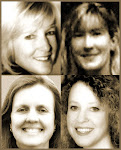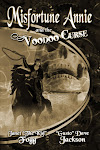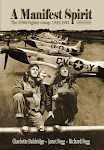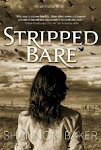When all things seem to work against getting your words on the page and you feel like giving up, there are many tricks that may help you refocus on C.O.N.T.I.N.U.I.N.G.
C – Commitment: make one to yourself. Confidence: use affirmations. Characters: play with them. Control yourself: nix TV and internet use, busy work, and other excuse behavior.
O – Overthinking the project? Original reason to write: what was it? Offer to help: judge contests, volunteer at conferences, beta read, mentor, believe in Karma.
N – Next sale: visualize it. NaNoWriMo and other challenges from friends, or simply blackmail yourself.
T – Therapist talk: what’s your block? Time: willing to put in lots of it? Turn off your editor. Toy with new genres. Target hot spots in marketing and sell yourself as well as your book. Treat yourself to a box of favorite pens.
I – Immediately mount the horse if you fall. Inspect your dominant emotion and understand it. Ignite your fire by rearranging your study or trying new rituals. Ignore skepticism around you: if someone asks, “Where can I find your novel?” tell of your successes.
N – Narrow down your goals. Nestle with your significant other or pet (don’t deny the things that matter). Notice and celebrate successes including agent feedback, contest finals, publications (even small venues), and hang awards on the wall.
U – Understand your theme. Utilize rejection: it’s not punishment; it’s a lesson in persistence, patience and packaging. Up the exercise to keep the blood and ideas flowing.
I – Invite the muse. If you see your chapter can be better, that’s a gift. Infuse energy and rhythm into your writing by reading other writers. Improve your skills by listening to feedback without defending your work (don’t stifle the critic).
N – Never give up: the only writers guaranteed not to publish are those who stop trying. Niche: find your place and your voice. Nothing guarantees a good first draft.
G – Gamble: what do you have to lose? Genre: do you love yours? Great ideas for a next book can be set aside in a file for later to prevent distraction. Gather so you don’t have to wander alone: Good critique groups, support groups, reading partners, conferences; be an editor or mentor.
- Inkpot
(First posted on Oct 19, 2011 Writing From the Peak Blog)
Sunday, July 22, 2012
Friday, July 6, 2012
Book Trailers
I love browsing for books, and with the never-ending escalation of social media and the on-line experience in our day-to-day lives, book trailers continue to increase in popularity, though there’s debate as to their effectiveness in increasing sales.
Isn't that what it’s all about? Getting someone interested in reading your book and looking at your website to see what other books you’ve written? A good book trailer does both and a great book trailer will be shared by viewers with friends.
While photos alone can be used to create an effective trailer, I personally enjoy the combination of live-action and photos and used both when creating the book trailer for Fogg in the Cockpit. Using Windows Movie Maker software I blended photos with a 1944 gun-camera clip. I did spend quite a bit of time learning the software and fine-tuning the duration of the images against the music, a process I thoroughly enjoyed. One decision was whether to include text across multiple photos, and as you can see, for this particular trailer I decided to let the images stand alone, with just the opening screen, closing screens, and the first gun-camera slide providing text.
I want to also mention the “special effects” that I created for Fogg in the Cockpit. At the end of the video a P-51 taxis across the screen towing a blacked out screen. This was done with Movie Maker and Photoshop, as I emulated the early days of stop motion by separating the P-51 image from the background, moving the fighter across the background screen a few frames at a time, and then creating a jpg of each specific image. It took 160 jpgs for those few seconds, plus another 100 or so beforehand as I figured out spacing and timing. Would I do it again, even though it was tedious and time-consuming? Yes. It was a challenge to see if I could pull it off, and I’ll use that clip in the credits on future (non-book) videos related to the 359th Fighter Group.
What about the images you plan to use in your trailer? You should either own the copyright on those images or have permission to use them. There are a number of royalty free sites, though some require that you give credit to the original artist. Read and print-out their terms of use, or request permission if terms are unclear. There are also sites where you can purchase the rights to use affordable stock photos. Again, make sure you understand their terms of use.
Oh, and while I’m thinking of it, be aware that video size does matter when posting on some sites, though 100MB is the topset that I’ve seen most often. My recent non-book related video was about 13MB and it was over two minutes in length, so I suspect it’s unlikely you’ll exceed the max.
For music? There are royalty-free sites such as musopen.org, or you can purchase music from a site such as freeplaymusic.com. There’s another choice though, and that’s creating your own, which can be done with software such as GarageBand, which was used by the designer of my Soliloquy book trailers. Yet another option would be to narrate your trailer, which might work best for non-fiction, though it could also work for fiction.
Now let’s compare a teaser trailer to a regular trailer. I hired my friend Matt of Infinite Improbability Productions to create a trailer for Soliloquy, and he created two. Before we started Matt read my long synopsis for the book, and then we met to discuss goals and review my preliminary text for the trailer. He then read the book before creating story boards. After I reviewed those and fine-tuned the text, he took over. It was his idea to first release the teaser trailer and then the full trailer.
Soliloquy "teaser" trailer:
Soliloquy full trailer:
Similar yet different, and many shots were used in both though Matt created unique music for each. The teaser trailer was released several months before the full trailer so I could (hopefully!) create buzz when announcing each.
If you decide to hire a designer to create your trailer, look at samples of their work to make certain they create the type of trailer you’re envisioning, and get a written proposal that includes a schedule for completion and payment. Think about whether it’s important to you to have live action or special effects, as that will dramatically increase the cost of the trailer.
Where are you going to post your trailer? Where aren’t you going to post your trailer? You can post trailers on your author page on Amazon, Goodreads, AuthorsDen, and ManicReaders, on blogs, websites, on Facebook, and in chat rooms. There’s also YouTube, Veoh, Blazing Trailers, MetaCafe, Dailymotion, Trailerspy, and many other video viewing sites. Before posting, remember to carefully consider your key words or tags. Oh, and search for book trailer contests and review sites just for trailers.
To summarize, whether creating your own trailer or hiring a designer, have an idea in mind for your storyline and write it out. Then find images that capture your vision. Think about music, sound effects, live-action footage, narration, and whether you want to have text flowing across your images or separate screen shots of text. Find music or compose original music. Decide on your opening and closing credits, and there you have it. Okay, maybe it’s not quite that simple. But the end-result? A movie about your book. A video preview that can be found based on keywords you’ve selected. A trailer that captures your book’s passion and pain, its guts and glory, ending, of course, with your website and ordering information for all those voracious readers out there.
Hey! Where’s the popcorn?
By Janet Fogg
Janet is the author of Soliloquy, an award-winning historical romance, and co-author of the military history bestseller, Fogg in the Cockpit.
Janet is the author of Soliloquy, an award-winning historical romance, and co-author of the military history bestseller, Fogg in the Cockpit.
Subscribe to:
Posts (Atom)




















